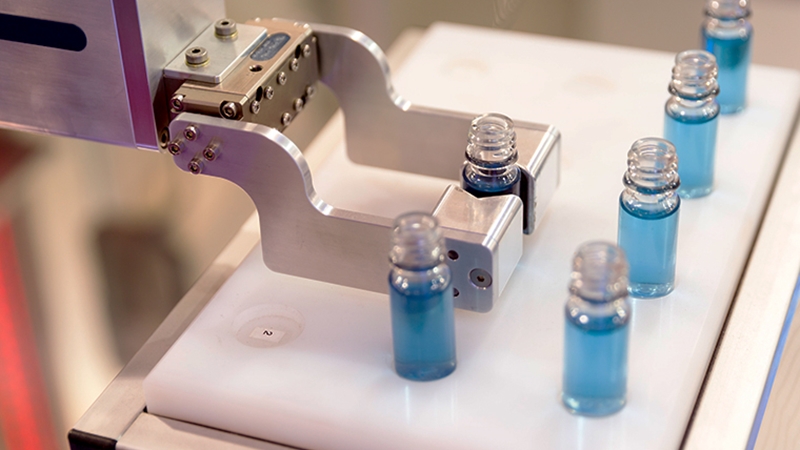The pharmaceutical industry benefits from automated solutions in segments such as fill finish. But what can be gained from implementing robotics and automation in the earliest part of the pharma value chain?
While many industries have integrated automation and robotics, the pharma industry is still catching up. However, some areas within the pharma industry have already tapped into the world of robotics within segments such as fill finish processes.
What others industries have discovered – and what the pharma industry is learning – is that automated solutions and robotics support much more than just increased productivity. These technologies pave the way for smoother good manufacturing practice (GMP) compliance and operational excellence. They improve product safety and subsequently, patient safety.
Until recently, the earliest end of the pharma life chain – research and development (R&D) – has focused less on automated platforms and more on manual platforms. Despite the hesitance in R&D, there is untapped value and potential with automated solutions. The new pharma reality faces many challenges, which directly affect R&D, such as:
- Industry competition: cost of operations and timelines for drug research and development is growing, resulting in potential reduced competiveness
- Planning for the unknown: R&D requires facilities that support unknown and multiple products and projects
- Changing and increasing regulatory requirements: increased need for work involving biological organisms (including GMOs) and requirements for animal welfare is a key driver in in-vivo research facilities
Amid these challenges, the main driver for research and development is to ensure creativity and flexibility in order to deliver to targets of new drug candidates, thus raising the question: How can these drivers materialize into new concepts for e.g. in-vivo research facilities for the future?
Operational excellence and maximum utilization in R&D
In order to decrease operational costs, let’s start with the concept of main functional area focus (i.e. laboratories and vivarium spaces) based on a just-in-time logistic strategy. This approach ultimately results in zero storage space and a central site storage with daily supplies. In addition, small rodent vivarium facilities involve comprehensive logistics around cage washing, changing processes, feed and bedding, all of which are less fit for a central storage principle. This leaves room for integration of automated solutions and use of robotics.
To support the driver of decreasing cost in a R&D laboratory and vivarium facility, it is worthwhile to look at how existing technologies can be combined in new ways to facilitate seamless logistics based on a just-in-time supply principle. Available technology like automated guided vehicles (AGV) combined with robotics and fully automated cage washing systems can tremendously simplify operations and overall logistics to and from vivarium barriers.
The rewards of such a concept are clear:
- Facility staff can focus on research activities and animal care rather than spending valuable time for internal logistics
- Cage transport to and from barrier autoclaves and cage washing procedures can take place 24 hours a day with no need for operators to work night shifts
- Elimination of operator exposure to allergens during the cage washing process, which is a common health, safety and environment challenge for these processes
The concept is dependent of thorough planning for each research study, but this is already a prerequisite when utilization of research facilities must be increased and optimized.
The concept of using automated systems combined with robotics coupled with an adaptable facility approach is setting new standards for reasonable prices and flexible and future-proof in-vivo research facilities.
Future-proof and optimize your R&D
Combining the use of automation and robotics with a generic and modular concept for laboratories and animal holding functions results in a future-proof, flexible and adaptable research facility. It is even possible to design for functionality change from one room type into another within a defined maximum time (even within a few weeks).
Changing a laboratory into an animal holding suite and vice versa within weeks requires integrated utilities and a well-defined change-over process. Compounding these requirements is the need for compliance with animal welfare requirements and a simple user interface in control room conditions (i.e. heat, humidity and air change rates).
But, often operational simplicity requires the implementation of complex systems as a response to defined project design drivers. In the end and very importantly, the user experience should be experienced as simple, not complex and this status supports the overall driver of increasing competiveness.
The concept of using automated systems combined with robotics coupled with an adaptable facility approach is setting new standards for adaptable, flexible and future-proof in-vivo research facilities.


